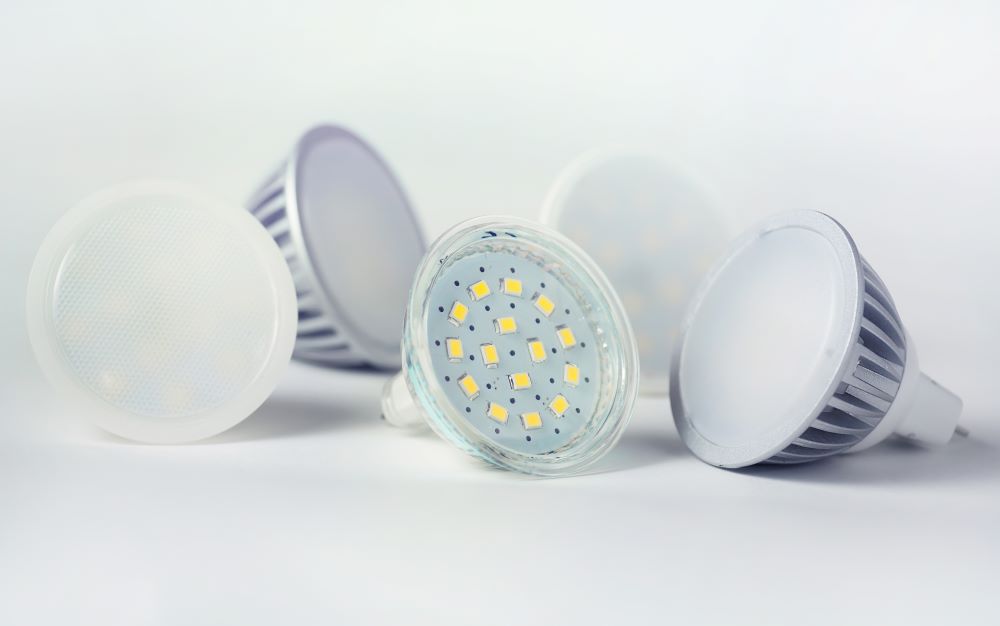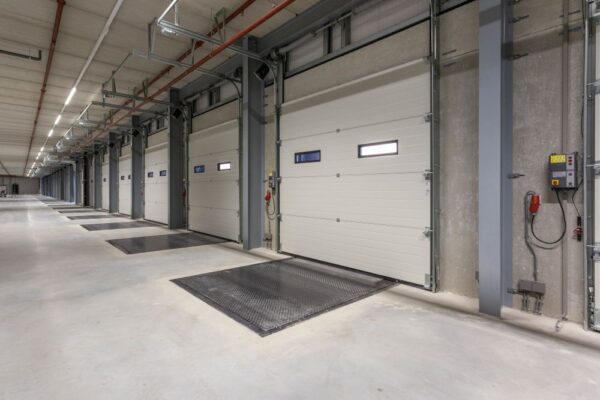Light emitting diodes, or “LEDs”, are rapidly becoming the standard lighting solution for a multitude of commercial and industrial applications. First-generation LED’s were relegated to use as signal lights in electronic devices because of their high cost of production and limited light emitting intensity. As LED technology developed, costs came down as the color and intensity capabilities of LEDs expanded.
The basic concept of how a diode generates light has not changed. The LED itself is a device that allows electric current to flow in only one direction. As the current flows through the LED material, atoms in that material release electrons which interact with a second material to generate light. Advances that are leading to next-generation LEDs are coming in the lighting fixture design, thermal management, control systems for LEDs, and retrofitting that is allowing traditional incandescent lighting to be replaced by LED systems.
Next Generation LED Lighting Technologies
Enhanced Energy Efficiency
Next generation LED technology is focused on achieving even higher levels of energy efficiency. Manufacturers are continually improving the efficacy of LEDs, resulting in reduced energy consumption and lower operating costs. Advanced chip designs, optimized thermal management, and efficient driver circuits contribute to these energy-saving advancements. This increased efficiency not only benefits the environment but also offers substantial savings for consumers and businesses.
Improved Color Quality
Color quality plays a crucial role in lighting applications, from creating vibrant and engaging environments to accurate color rendering for critical tasks. Next generation LEDs are pushing the boundaries of color quality, aiming for improved color accuracy, color consistency, and color customization options. These advancements are particularly significant in industries such as retail, hospitality, and healthcare, where precise color rendering is essential for visual appeal and accurate perception.
Intelligent Lighting Controls
Next generation LED lighting products are incorporating intelligent controls to enhance functionality and energy management. These advanced controls enable features such as dimming, color tuning, scheduling, occupancy sensing, and integration with smart home systems. Intelligent lighting controls offer unparalleled flexibility, allowing users to tailor lighting settings to specific needs, optimize energy usage, and create personalized lighting experiences.
Human-Centric Lighting
Human-centric lighting is an emerging trend in next generation LED technology. It aims to mimic natural daylight and its impact on human well-being. LED lighting products are being designed to adjust color temperature and intensity throughout the day, aligning with our natural circadian rhythms. This dynamic lighting promotes alertness, productivity, and better sleep patterns. Human-centric lighting finds applications in various settings, including offices, schools, healthcare facilities, and residential environments.
Internet of Things (IoT) Integration
The integration of LED lighting with the Internet of Things (IoT) is driving new opportunities for connectivity and control. Next generation LED lighting products can be seamlessly integrated into IoT ecosystems, allowing for intelligent automation, data collection, and analysis. This integration enables applications such as asset tracking, occupancy monitoring, energy management, and personalized lighting experiences. IoT-enabled LED lighting systems provide enhanced functionality and open up possibilities for smart buildings and cities.
Miniaturization and Flexible Form Factors
Next generation LED technology is witnessing advancements in miniaturization and flexible form factors. Smaller LED chips and compact designs allow for more creative and flexible lighting installations. Thin, flexible LED strips, panels, and modules provide greater design freedom and adaptability for various applications, including architectural lighting, signage, and displays. These innovations offer exciting possibilities for dynamic and visually stunning lighting installations.
Sustainability and Environmental Considerations
Sustainability remains a key focus in next generation LED technology. Manufacturers are committed to reducing environmental impact by improving the recyclability of LED products, using eco-friendly materials, and adopting cleaner production processes. Additionally, advancements in LED technology contribute to energy conservation, reduced carbon emissions, and longer product lifespans, further promoting sustainable practices.
Quantum Dot and Control Systems
Quantum Dot LEDs are one of the more significant new generations of lighting to be used in residential and small-scale LED systems. Quantum Dot LEDs have been available since the mid-2000’s, but new manufacturing techniques and materials have led to orders of magnitude increases in the emission efficiency of Quantum Dot LEDs. The efficiency is coupled with lower power consumption, making Quantum Dot LED systems ideal for end users that are concerned with developing “green energy” and ecologically-friendly systems. Quantum Dot LEDs also provide a larger active lighting area with a product thickness of less than 0.5 mm. Samsung introduced the first television using Quantum Dot LED technology in 2015, continuing the industry drive to produce ever thinner and more flexible display screens.
LED control systems are reaping the benefits of mobile and wireless technology. These new systems allow banks of LED lights to be monitored and controlled in ways that achieve better efficiency and energy savings. Manufacturers are also incorporating smart technology into these control systems that allow them to read and react to ambient conditions without human intervention. The costs of these systems have dropped dramatically while their capabilities continue to expand.
Public Support for LED Innovation
Federal standards and regulations are pushing consumer and commercial lighting applications away from traditional incandescent lighting sources and into energy-efficient systems that include LEDs. Lighting component manufacturers have banded together to form “Zhaga”, a lighting industry consortium that is seeking to standardize LED lighting to facilitate the retrofitting of fluorescent and incandescent technology to work with LEDs. Zhaga has organized standardized screw patterns, power inputs, and lumen outputs to allow fixture manufacturers to make products that will work with the broadest possible range of LED lights. This industry cooperation will enable a more rapid shift to LED lighting, with a faster adoption of LED systems that satisfy demands for green energy applications in commercial, industrial, and residential environments.
The Next Generation of LED Lighting is Coming
Some industry analysts expect the LED market to expand to $30 billion and more before 2025 as these next generation LEDs and LED control systems replace antiquated lighting sources. Early adopters of these systems will realize quick returns on their investments as their energy costs go down and their physical lighting systems are primed and ready for introduction of newer and better LEDs.








